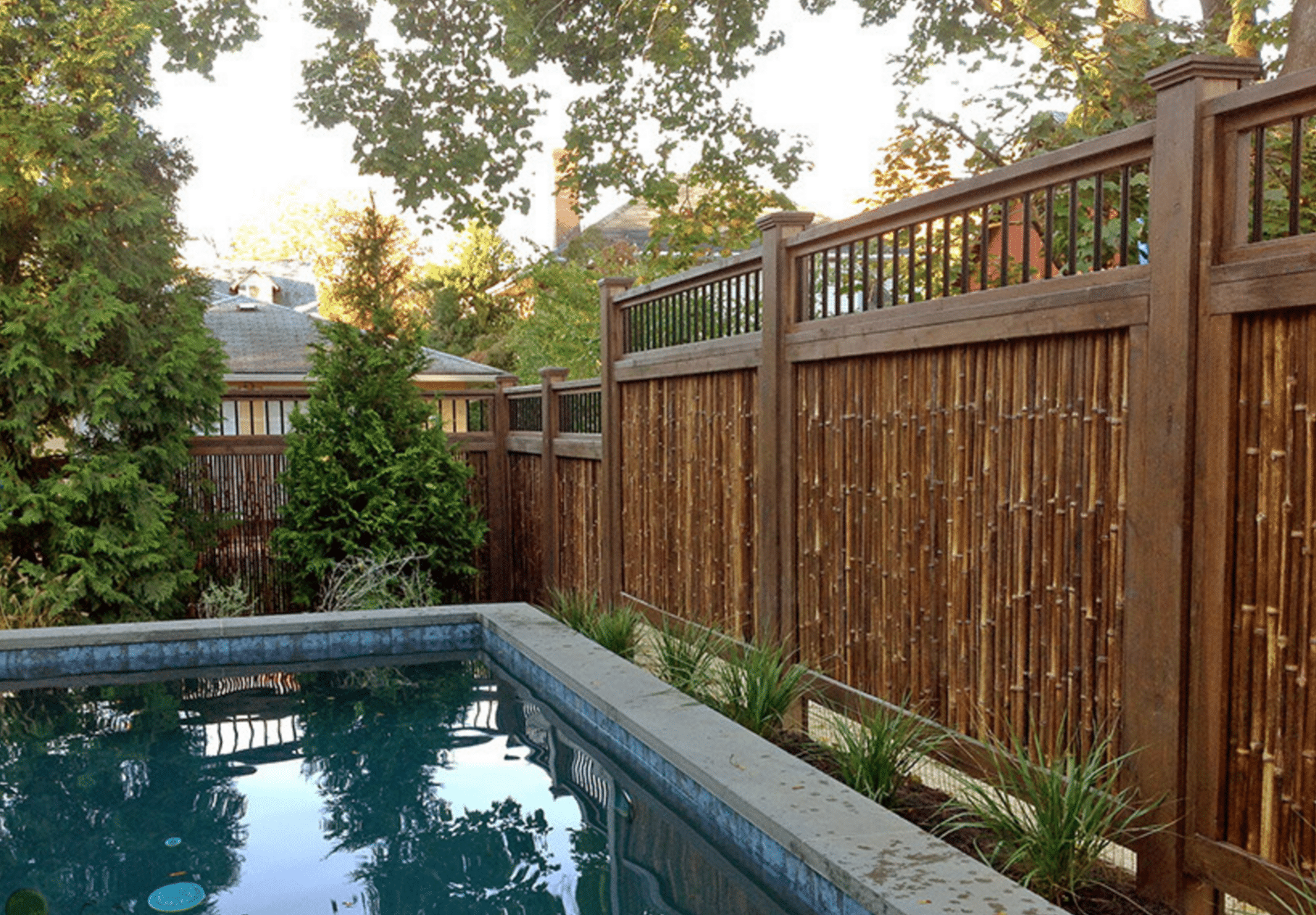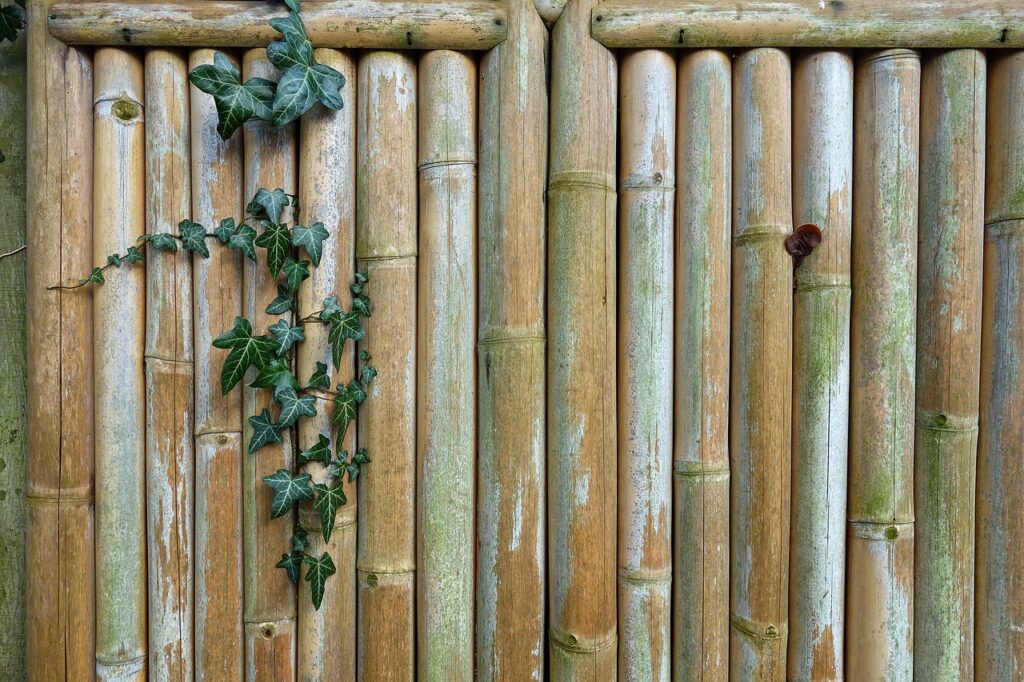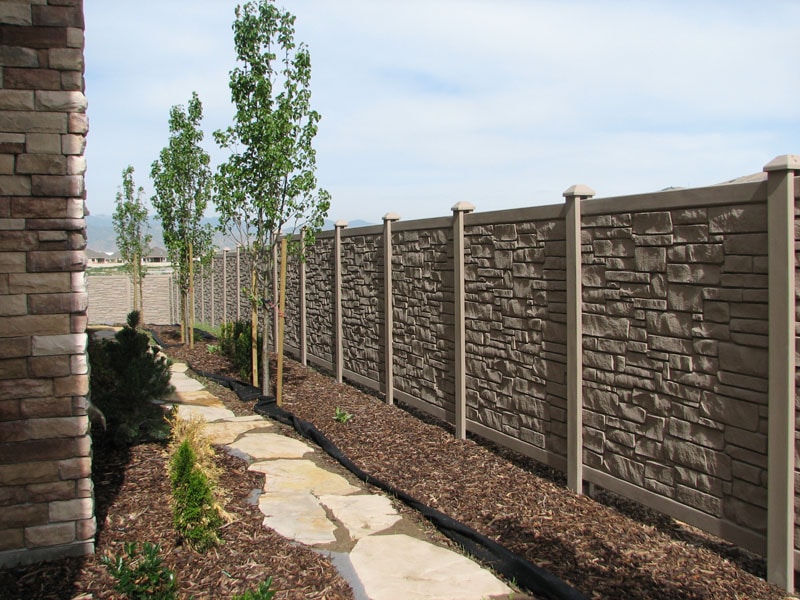Are you looking for sustainable fencing options for your eco-conscious home? If so, you’ve come to the right place! In this article, we will explore the topic of sustainable fencing in detail, providing you with all the information you need to make an informed decision. Whether you’re concerned about the environmental impact of your fence or looking for durable and low-maintenance options, we’ve got you covered. So, let’s dive in and discover the wonderful world of sustainable fencing!
When it comes to eco-friendly fencing, there are plenty of options to choose from. From bamboo and reclaimed wood to recycled materials and living fences, there’s a sustainable solution for every taste and budget. We will discuss the benefits and drawbacks of each option, including their durability, maintenance requirements, and their impact on the environment. Additionally, we will provide tips on how to select the right sustainable fence for your specific needs, and how to properly maintain it to ensure its longevity. By the end of this article, you’ll have a comprehensive understanding of sustainable fencing options and be on your way to creating an eco-conscious home of your dreams.
Stay tuned for more on our blog “http://fencedude.org/” as we delve deeper into sustainable fencing options and explore other fascinating aspects of fences. Here, you’ll find an array of informative articles that cover a multitude of topics related to fences, leaving no stone unturned. So, whether you’re curious about design trends, installation techniques, or eco-friendly materials, we’ve got all the reliable information you need. And don’t worry, we’ve got your SEO covered too, ensuring that our blog posts are optimized to help you find the answers to your fence-related questions easily. Happy fencing!
Sustainable Fencing Options for Eco-Conscious Homes
Sustainable fencing options are becoming increasingly popular as more homeowners strive to reduce their carbon footprint and create environmentally friendly properties. By choosing the right materials for your fence, you can contribute to a more sustainable future while enhancing the aesthetics and value of your home. In this article, we will explore various types of eco-friendly fence options, their benefits, and factors to consider when choosing the right fencing for your home.

Common Fence Materials
Wood
Wood has been a traditional and popular choice for fencing due to its natural beauty and versatility. However, not all wood is created equal when it comes to sustainability. Some types of wood, such as cedar and redwood, are known for their durability and resistance to rot and decay. These options are sourced from sustainable forests, making them a more eco-friendly choice. On the other hand, tropical hardwoods are often harvested unsustainably, leading to deforestation and habitat destruction.
Vinyl
Vinyl fencing has gained popularity in recent years due to its low maintenance and durability. While vinyl itself is not biodegradable, there are recyclable options available in the market. These fences can last for decades without requiring painting or regular maintenance, reducing the need for harmful chemicals and reducing waste.
Aluminum
Aluminum fencing offers many advantages for eco-conscious homeowners. It is highly recyclable, making it an excellent choice for those looking for a sustainable option. Additionally, aluminum fences are lightweight, durable, and versatile, providing a low-maintenance and long-lasting fencing solution.
Chain-link
Chain-link fences are often seen as less aesthetically pleasing, but they can be a sustainable option if chosen wisely. Opting for recycled chain-link materials helps reduce waste and preserves natural resources. Additionally, there are eco-friendly coatings available for chain-link fencing, further minimizing its environmental impact.
Eco-Friendly Fence Options
Bamboo
Bamboo is an eco-friendly material that offers a unique and exotic look to your fence. It grows quickly and requires minimal water, making it a sustainable choice. Bamboo is highly durable and resistant to pests, providing a long-lasting fencing option. However, ensure that the bamboo you choose is sourced from sustainable farms and not harvested from natural habitats.
Recycled Materials
Using recycled materials for your fence is an excellent way to reduce waste and transform old materials into something functional and beautiful. Recycled plastic or composite materials offer the look of wood while eliminating the need for cutting down trees. Consider using reclaimed wood, repurposed metal, or recycled plastic panels to create a unique and sustainable fence.
Living Hedges
Living hedges, made of carefully manicured plants, can serve as an eco-friendly alternative to traditional fences. They provide privacy, reduce noise pollution, and offer habitat for local wildlife. Choosing native plants and shrubs not only enhances biodiversity but also reduces the need for watering or chemical treatments.

Benefits of Sustainable Fencing
Opting for sustainable fencing options offers various benefits for both homeowners and the environment. Here are some of the key advantages:
Reduced carbon footprint
By choosing eco-friendly materials and manufacturing processes, sustainable fencing options help reduce greenhouse gas emissions and minimize environmental harm. This contributes to a healthier planet for future generations.
Natural aesthetic
Sustainable fences often blend seamlessly with the natural surroundings, enhancing the overall aesthetics of your property. Whether it’s the warm tones of wood, the sleek look of metal, or the lush greenery of living hedges, sustainable fencing options can complement any architectural style.
Longevity and durability
Many sustainable fence materials are built to last, reducing the need for frequent replacements. This not only saves you money in the long run but also minimizes waste and conserves resources.
Minimal maintenance
Sustainable fencing options, such as vinyl or aluminum, require minimal maintenance compared to traditional materials like wood. This saves you time, energy, and resources, while still ensuring the beauty and functionality of your fence.
Wood Fencing
Wood fencing has a timeless appeal and remains a popular choice for homeowners. However, not all wood is sustainable, so it’s important to make informed choices to minimize environmental impact.
Types of wood
Some types of wood, such as cedar and redwood, are naturally resistant to decay, making them excellent choices for sustainable fencing. These woods are often sourced from well-managed forests, ensuring the sustainability of the materials.
Treated vs. untreated
When using wood for fencing, homeowners often consider using treated wood to enhance durability. However, some treated woods contain harmful chemicals that can leach into the soil and nearby water sources. Opting for untreated or naturally-treated wood is a more eco-friendly choice.
Sourcing sustainable wood
If you choose to go with wood fencing, look for suppliers that source their wood from sustainably managed forests. Certifications like Forest Stewardship Council (FSC) can help ensure that the wood comes from responsibly harvested sources.
Maintenance tips
To prolong the life of your wood fence, regular maintenance is necessary. Applying an eco-friendly sealant or paint can protect the wood from weathering and rot. Additionally, periodic inspections and repairs can help address any issues promptly and prevent further damage.
Vinyl Fencing
Vinyl fencing offers a maintenance-free and durable alternative to traditional wood fencing. While it’s not biodegradable, there are eco-friendly options available in the market.
Materials and manufacturing process
Vinyl is a type of plastic made from polyvinyl chloride (PVC). Historically, PVC production had negative environmental impacts due to the release of toxic chemicals. However, advancements in manufacturing techniques have significantly reduced these harmful emissions.
Recyclable options
Many vinyl fence manufacturers now offer recyclable options, allowing you to return the fence panels at the end of their life cycle for recycling. This promotes the circular economy and helps minimize waste.
Maintenance and durability
Vinyl fences require minimal maintenance, usually limited to occasional cleaning with water and mild soap. They are resistant to moisture, rot, and insect damage, making them a long-lasting fencing option for eco-conscious homeowners.
Aluminum Fencing
Aluminum fencing offers several advantages for those seeking a sustainable and stylish fence option.
Advantages of aluminum
Aluminum is a lightweight and highly recyclable material that requires minimal energy for production. Choosing aluminum fencing helps reduce the demand for virgin materials and conserves natural resources.
Recycled aluminum options
Many aluminum fence manufacturers use recycled aluminum, further reducing the environmental impact of the fencing materials. Recycled aluminum maintains the same level of strength and durability as virgin aluminum, making it a sustainable and reliable choice.
Customization possibilities
Aluminum fences offer versatile design options, allowing homeowners to customize their fences to suit their preferences. Whether you prefer a sleek and modern look or a more traditional style, aluminum can be easily shaped and designed to create the desired effect.

Chain-link Fencing
Chain-link fences are known for their affordability and practicality. While not typically seen as an eco-friendly choice, there are ways to make chain-link fencing more sustainable.
Recycled chain-link
Opting for recycled chain-link fencing materials helps reduce waste and minimize the impact on natural resources. Recycled metal can be just as sturdy and durable as new materials, providing a sustainable alternative without compromising functionality.
Alternative uses for chain-link
Rather than using chain-link solely as a standalone fence, consider incorporating it into other sustainable fencing options. For example, combining chain-link with living hedges can create a more visually appealing and environmentally friendly fence.
Eco-friendly coatings
Applying eco-friendly coatings to the chain-link fence can help protect the metal from rust and corrosion, prolonging its lifespan. Look for coatings that are free from harmful chemicals and environmentally friendly.
Bamboo Fencing
Bamboo fencing offers a sustainable and visually striking alternative with a tropical feel. Here’s why it’s a popular choice among eco-conscious homeowners.
Sustainable harvesting practices
Bamboo is a grass that grows rapidly, making it a highly renewable resource. When harvested responsibly, bamboo becomes an eco-friendly fencing option that does not contribute to deforestation.
Installation tips
When installing bamboo fencing, make sure to choose suppliers that adhere to sustainable and ethical harvesting practices. Proper installation techniques, including attaching the bamboo to a durable frame, ensure longevity and stability.
Durability and maintenance
Bamboo is naturally strong and durable, making it suitable for fencing purposes. However, regular maintenance, such as sealing or staining, can help prolong its lifespan and maintain its appearance.

Recycled Material Fencing
Using recycled materials for your fence is a creative and sustainable way to reduce waste and repurpose existing resources.
Types of recycled materials
Recycled plastic, composite materials, reclaimed wood, and repurposed metal can all be used to create eco-friendly fencing options. These materials not only save forests and reduce landfill waste but also offer unique and distinctive designs.
DIY options
Building a fence using recycled materials can be a rewarding DIY project, allowing you to showcase your creativity and craftsmanship. Numerous tutorials and resources are available online to guide you through the process.
Durability and lifespan
When using recycled materials for fencing, ensure that they are structurally sound and suitable for outdoor use. Proper installation techniques and regular maintenance can help maximize the durability and lifespan of your fence.
Living Hedges as Fencing
Living hedges provide an eco-friendly and aesthetically appealing alternative to traditional fences. Here’s why they can be an excellent choice for eco-conscious homeowners.
Benefits of living hedges
Living hedges offer numerous benefits, including privacy, noise reduction, air purification, and promoting biodiversity. They provide a natural barrier while enhancing the visual appeal of your property.
Choosing suitable plants
When selecting plants for your living hedge, consider native species that thrive in your climate. These plants are more likely to require less maintenance, making them a sustainable choice.
Pruning and maintenance
Regular pruning and maintenance are necessary to keep your living hedge dense and healthy. Trimming and shaping the plants not only maintain the desired height and thickness but also promote optimal plant growth.
Factors to Consider
Before choosing the right fencing option for your eco-conscious home, it’s essential to consider various factors.
Budget
Establishing a budget for your fencing project helps narrow down the options that align with your financial goals. Keep in mind that sustainable materials may have a higher initial cost but can provide long-term savings.
Local building codes
Make sure to check the local building codes and regulations regarding fence height, materials, and installation requirements. This ensures compliance and avoids costly violations or delays.
Aesthetics and design
Consider the overall look and feel you want to achieve with your fence. Choose materials and designs that complement your home’s architecture and landscaping, creating a cohesive and visually pleasing environment.
Privacy and security
Identify the level of privacy and security you need from your fence. Some materials offer more privacy than others, and additional features such as gates and locks can enhance security.
Installation and Maintenance
Proper installation techniques and regular maintenance are essential for the longevity and functionality of your fence.
Preparing the site
Before installing your fence, make sure the land is properly prepared. Clear any obstacles or vegetation, level the ground, and mark the fence line to ensure precise installation.
Proper installation techniques
Follow the manufacturer’s instructions or consult a professional to ensure the correct installation of your chosen fencing materials. Proper techniques, such as securing posts and panels securely, are crucial for stability and durability.
Regular upkeep and repairs
Inspect your fence regularly to identify any issues or damage. Promptly address repairs, such as fixing loose screws, replacing broken panels, or repainting, to maintain the fence’s integrity and prolong its lifespan.
Comparing Costs
When considering sustainable fencing options, it’s essential to evaluate both the initial and long-term costs.
Initial expenses
The initial cost of sustainable fencing materials may be higher than traditional options. However, considering their long lifespan and low maintenance requirements, these expenses can often be offset by long-term savings.
Long-term expenses
Consider the cost of maintenance, repairs, and potential replacements over the lifespan of your fence. Sustainable materials often require less maintenance and offer superior durability, resulting in lower long-term expenses.
Return on investment
Investing in sustainable fencing options can enhance the value of your property, attract potential buyers, and contribute to a greener community. Consider the potential return on investment when choosing the right fencing materials.
Conclusion
Choosing sustainable fencing options for your eco-conscious home provides numerous benefits, ranging from reducing your carbon footprint to enhancing the aesthetics and functionality of your property. By opting for materials like sustainable wood, vinyl, aluminum, or chain-link, or exploring alternative options like bamboo, recycled materials, or living hedges, you can create a fence that aligns with your values and contributes to a more sustainable future. Consider your budget, local regulations, aesthetics, and maintenance requirements when making your decision. With proper installation and regular upkeep, your sustainable fence will provide both beauty and function for years to come.
This article is written by Fencedude.org, a blog website focused on all aspects of fencing, covering common fence materials, eco-friendly options, benefits of sustainable fencing, specific guidance for wood, vinyl, aluminum, and chain-link fencing, as well as alternative options like bamboo, recycled materials, and living hedges. We also explore factors to consider when choosing the right fence, installation and maintenance tips, and provide a cost comparison for sustainable fencing options. For more information and expert advice, visit our website.
